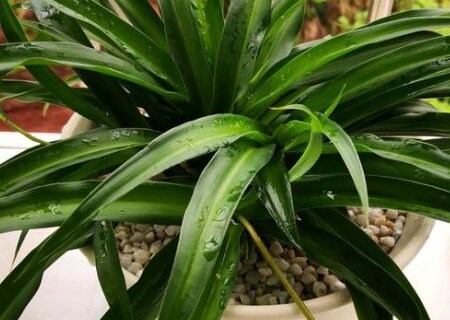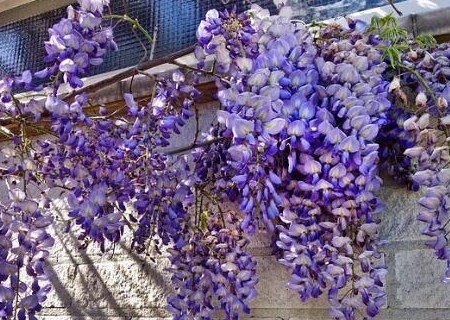What are the seed planting methods of evergreen herbaceous plant Cymbidium? What if the leaves turn yellow? Can you put it in the bedroom?
Cymbidium, Monocotyledon, Aspartaceae, Cymbidium belongs to perennial evergreen herbs, Cymbidium likes warm, humid, semi-shady environment, strong adaptability, many people like to plant it, so what do you know about the seed planting methods of Cymbidium? What if the leaves turn yellow? Can you put it in the bedroom?

I. seed planting method of Cymbidium
The seeds of Cymbidium can be sowed in March every year, but because the seed particles are small, the covering soil above the seeds should not be thick, generally 0.5 cm. Under the condition of 15 ℃, the seeds of Cymbidium can germinate for about 2 weeks, and then transplant and culture after the seedlings take shape. It is worth noting that when the varieties with leaf art are propagated by seeds, their offspring are degenerated into all-green varieties.
Planting substrate:
1. Matrix: Cymbidium has strong adaptability to all kinds of soil, and it is very easy to cultivate. Fertile sandy loam, humus, peat or fine sandy soil can be used as pot soil with a small amount of base fertilizer.
2, containers: hanging orchid planting flowerpots are relatively casual, but white porcelain flowerpots or plastic flowerpots are better, with a height of about 15 to 20 centimeters, which is quite fresh and elegant when matched with hanging orchids.
The Culture method of Cymbidium
1. Lighting: hanging orchid likes semi-shady environment and is very sensitive to light. When the sun shines directly in summer and autumn, the leaves will wither and yellow, and even the whole plant will die. In winter, because the sun is not strong, we can let the orchid accept some direct sunlight properly.
2. Temperature: hanging orchid likes warm and humid climate, can not tolerate severe cold and heat, the optimum growth temperature is 15: 25 ℃, and the room temperature in winter should not be lower than 5 ℃. Avoid strong light in high temperature, but see more sunshine in low temperature and cold.
3. Watering: Diaolan likes water, has strong drought resistance, and needs more water during the peak growth period from March to September, so it should be watered and sprayed frequently to keep the basin soil completely moist. In the winter dormant period, you can wait until the surface of the basin soil is about 1 cm deep dry before watering.
4. Fertilization: Cymbidium is a more fertilizer-tolerant plant. If there is not enough fertilizer and water, it is easy for the scorched head to grow old, and the leaves turn yellow and lose its ornamental value. For those who have begun to grow small plants, nitrogen fertilizer is applied once every half a month, and those with good growth are not allowed to apply nitrogen fertilizer.
5, change the basin: the hanging orchid should change the basin once every March, if the basin is deeper and the base fertilizer is enough, the basin can be changed once every two years. When turning the pot, knock the plant out of the basin, cut off the withered roots and excess roots, replace it with new culture soil and apply sufficient base fertilizer.
6, diseases and insect pests: hanging orchid is generally not easy to occur diseases and insect pests, the occurrence of diseases is generally stagnant water in basin soil, poor ventilation caused by root rot and root rot, should be timely spray control. The dense plant clusters are poorly ventilated and are vulnerable to scale insects, so prevention should be given priority to.
7. Pruning: the orchid should cut off the yellow leaves at any time and turn the basin once a year in March to cut off the old root, rotten root and excess fibrous root. The old leaves of Cymbidium can be cut off in the first and middle of May, which will promote the germination of more new leaves and small Cymbidium.
Second, what if the leaves of Cymbidium turn yellow
1. Improper fertilization: excessive fertilization causes yellowing of leaves, which exceeds the needs of the plant. At first, the leaves are bright and uneven, and then the roots rot, and the leaves are yellow.
Treatment method: should stop fertilizing, irrigate more water, or turn the pot to clean the root and replace the new soil.
2. Nutrient loss: all kinds of nutrient elements in the basin soil have been exhausted, the three elements of nitrogen, phosphorus and potassium have not been replenished in time, the plant is lack of nutrients, and the leaves are yellow and thin.
Treatment method: fertile loam and fertile water should be replaced in time.
3, lack of sunlight: although the orchid is a semi-negative flower, it should see more than four hours of astigmatism at least every day, otherwise the chlorophyll will decrease and the leaves will turn yellow.
Treatment: should set aside free time every day to put the orchid in the sun for a few hours, but not too much exposure to the sun.
4. poor air permeability and water permeability of basin soil: stagnant water in basin soil does not dry for a long time, root respiration is difficult, which leads to leaf yellowing.
Treatment method: loosen the soil and control moisture in time. Fifth, it is impervious to water for a long time. The roots of Cymbidium lose water, and the lower old leaves turn yellow. It should be watered thoroughly to keep the basin soil warm and moist.
Can you put the orchid in the bedroom
Cymbidium has the role of air purification, want to raise a plant in the bedroom. So the question is, as plants, they also have to breathe at night, will they compete with us for oxygen? Can I put the orchid in the bedroom?
In fact, the bedroom is where we rest, as long as you do not put more than or equal to 3 pots of hanging orchid in the bedroom, how much oxygen can the small hanging orchid consume?
The freshness and elegance of the bedroom can make people feel at ease, the bedroom full of green, let the person's rest get the best experience. The air purification function of the hanging orchid makes the air in your bedroom fresh.
Therefore, the hanging orchid can be put in the bedroom. But to choose a slightly smaller adult plant, the number of pots should be 1-2 pots. It's best to put it on the windowsill or on the wall opposite the bed. Not only eliminate everyone's doubts, but also meet the needs of fresh air in the bedroom, but also let the hanging orchid grow very well. To kill three birds with one arrow, of course we should do it quickly!
Time: 2019-03-18 Click:
- Prev

What are the seed planting methods of February orchid (also known as Zhuge)? How do you trim it? How much is the seed per jin?
Orchidaceae in February, growing in plains, mountains, roadsides, and roadsides. Low requirements for soil light and other conditions, cold and drought resistance, tenacious vitality, widely cultivated in China. So what are the methods of planting orchid seeds in February? How do you trim it? How much is the seed per jin?
- Next

What are the seed planting methods of wisteria (also known as rattan)? What if the leaves turn yellow and fall off? Why not blossom?
Wisteria has strong adaptability to the growing environment. Folk purple flowers or water blanch cold salad, or wrapped noodles fried, making purple cakes, purple cakes and other flavor pasta, people like to grow wisteria. So do you know the methods of planting wisteria seeds? Why not blossom? What if the leaves turn yellow and fall off?
Related
- Fuxing push coffee new agricultural production and marketing class: lack of small-scale processing plants
- Jujube rice field leisure farm deep ploughing Yilan for five years to create a space for organic food and play
- Nongyu Farm-A trial of organic papaya for brave women with advanced technology
- Four points for attention in the prevention and control of diseases and insect pests of edible fungi
- How to add nutrient solution to Edible Fungi
- Is there any good way to control edible fungus mites?
- Open Inoculation Technology of Edible Fungi
- Is there any clever way to use fertilizer for edible fungus in winter?
- What agents are used to kill the pathogens of edible fungi in the mushroom shed?
- Rapid drying of Edible Fungi

